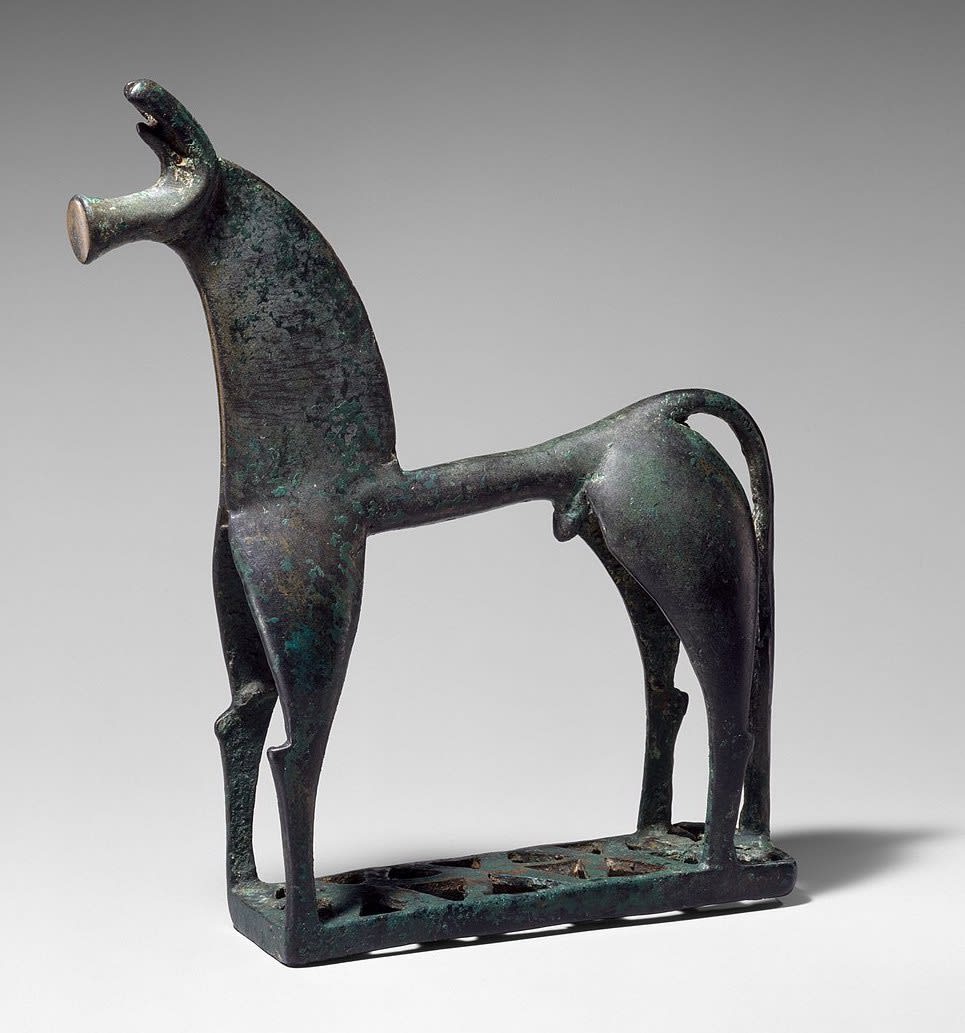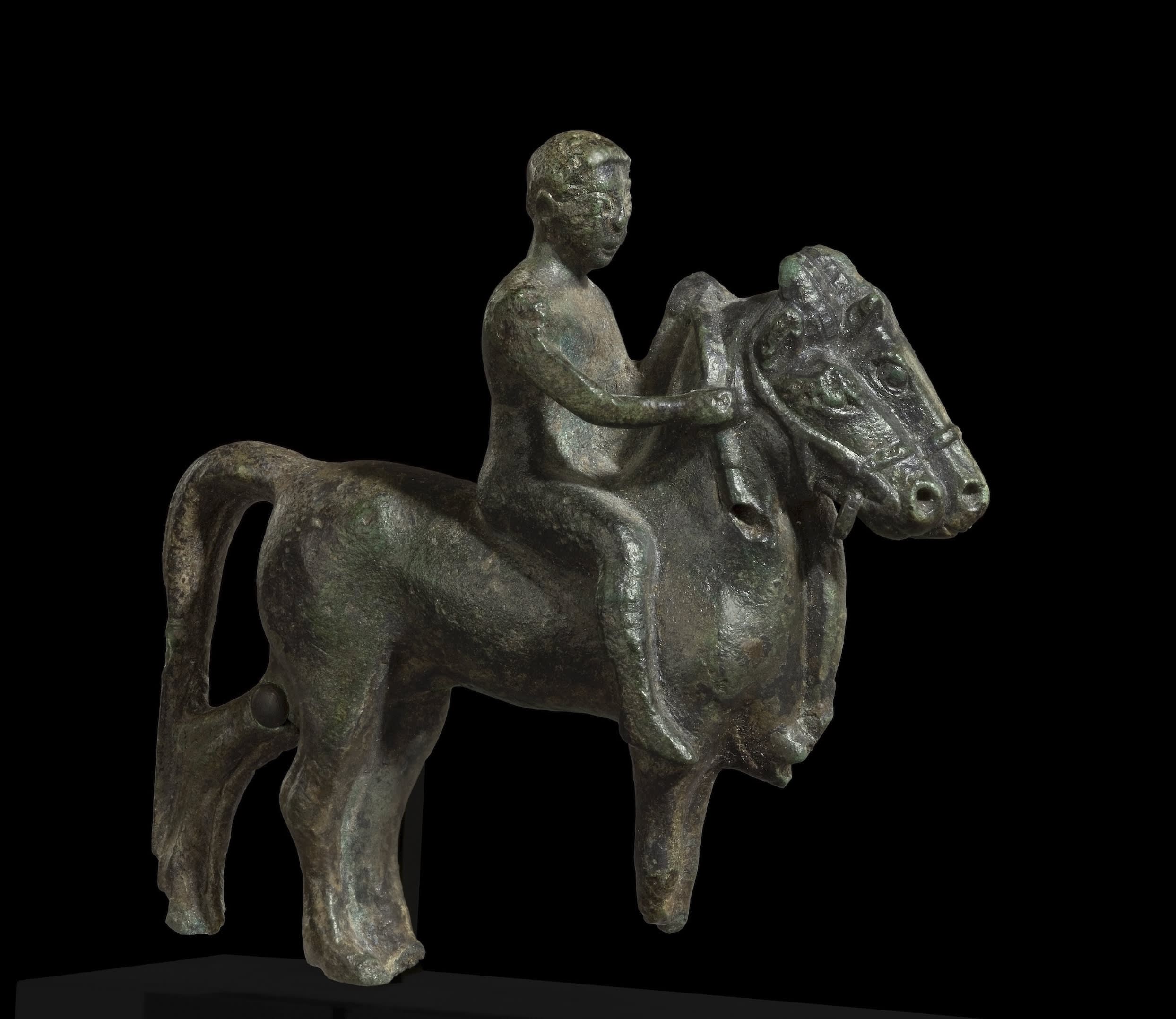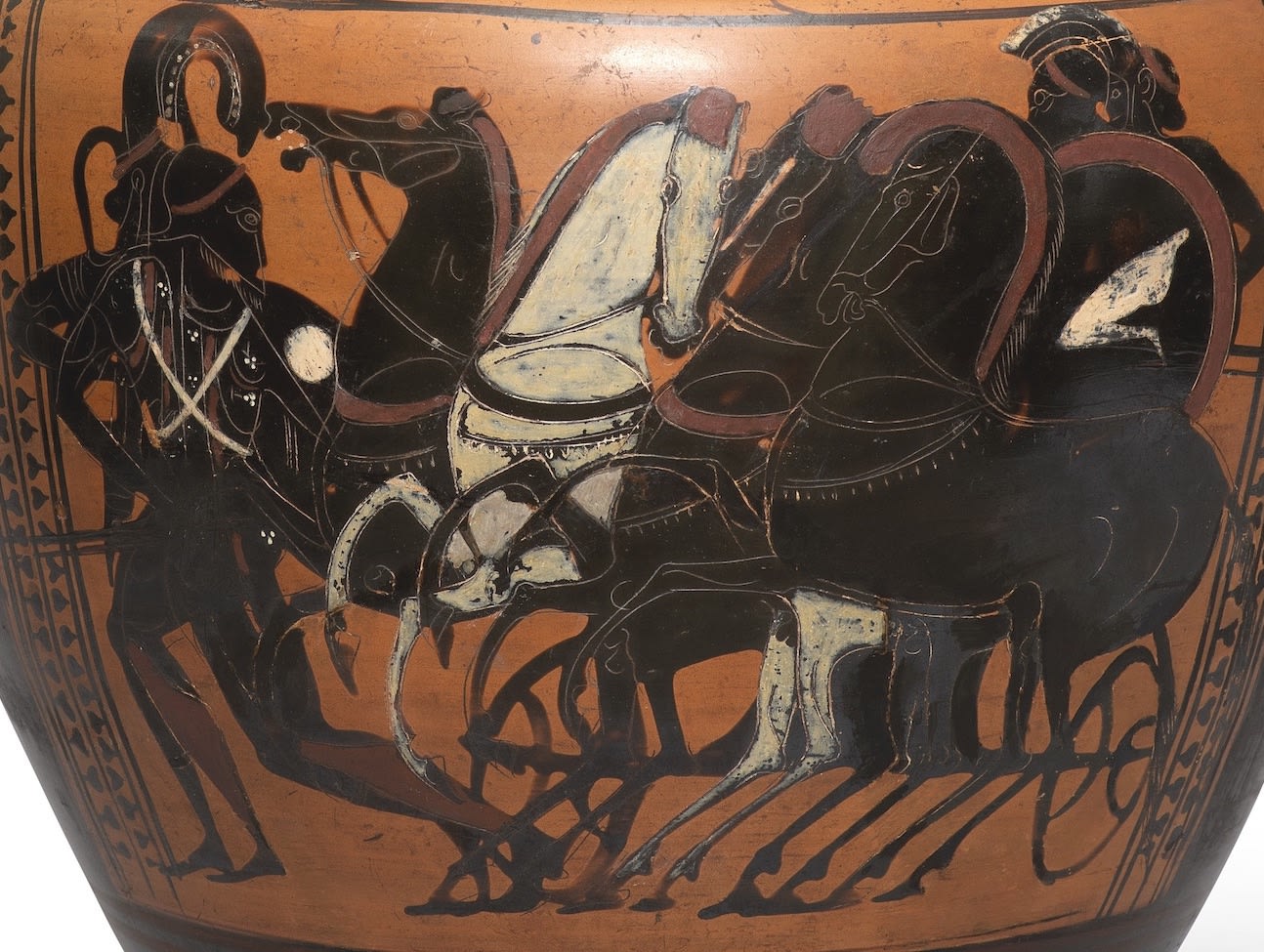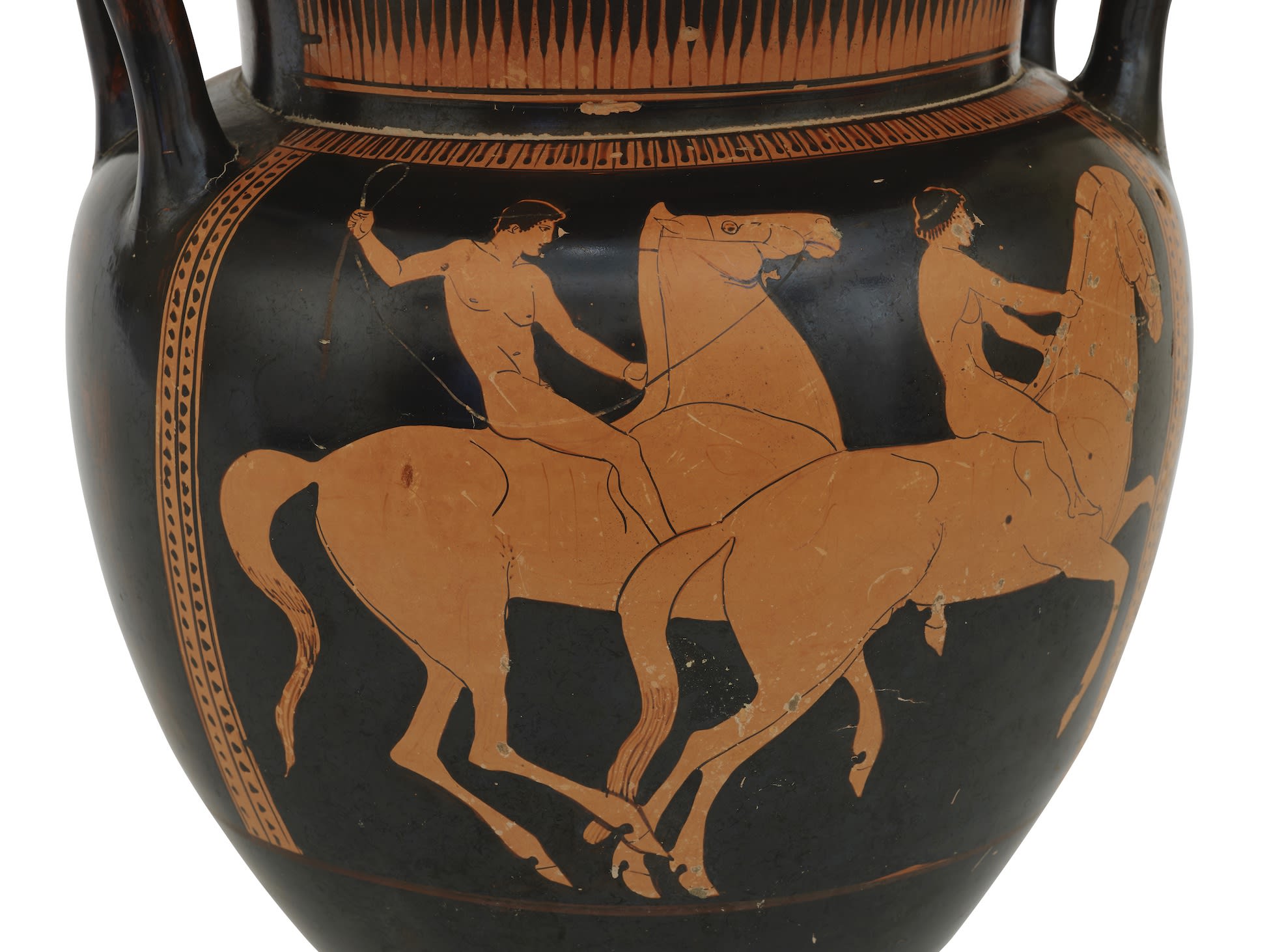‘Such are the horses on which gods and heroes ride, as represented by the artist. The majesty of men themselves is best discovered in the graceful handling of such animals.’Xenophon, On Horsemanship, XI.7

Horses played an immensely prominent role in the ancient Greek world. Their prevalence in the material culture of Archaic and Classical Greece is undeniable, both in scenes of daily life and in mythological depictions, with gods and heroes alike, being borne by chariots, both the two-horsed biga and the four-horsed quadriga. When Athenian society was first divided into three classes according to birth and wealth, the hippeis (horse-owners or cavalrymen) were placed at the top strata of society. Even after Solon’s constitutional reforms in 592/91 B.C. they were still in the top two of the five socio-political levels. The dominance of horse owners is reflected throughout the history of Attic vase painting, depicting Athenian men with their horses, engaged in hunting, riding, and other sporting activities.
The earliest appearances of the horse in Greek art are in the Geometric bronzes and pottery of Athens and the surrounding areas. The horses are stylised with rangy bodies atop long slender legs and accompanying tail. Kallos’ Attic Geometric kantharos, depicts just such an animal, standing in profile, representing the beginning of a long series of images of horses and horsemanship in the art of Ancient Greece. The horse was a sign of economic status and social prestige among the elites of Geometric Greece, a period of independent states largely governed by horse-rearing aristocrats. The sheer multitude of small bronze horses given as votive offerings at Olympia and other sanctuaries during this period, clearly reveal the importance of the horse. Such bronze figurines were intended either as stand-alone objects or attached to furniture, stands, or tripods.

A GREEK GEOMETRIC POTTERY KANTHAROS
Attic, late 8th century BC

A GEOMETRIC BRONZE HORSE
Circa 8th century BC
The Metropolitan Museum of Art, New York, inv .no.21.88.24
(CCO)
By the time of the Archaic period in Ancient Greece, the angular, stylised horses used to decorate the furniture and vessels of the Geometric period are replaced by increasingly naturalistic representations. Large bronze vessels of the archaic and Classical periods were indeed also ornamented with horses, but more usually in this period with the addition of a rider. Kallos’ bronze appliqué would once have been riveted to a large-scale bronze vessel such as a krater. This is an unusual type with one rider but two horses. The rider is a young man, depicted beardless and nude. He is riding one horse, and holding the bridle of another walking alongside. The image of horsemanship is natural and relaxed; the horses are stocky with realistically rendered details. The subject is an everyday depiction of Greek life, and horses continued to be a crucial part of that.

A GREEK BRONZE APPLIQUÉ OF A HORSE AND RIDER
Late Archaic to early Classical Period
Circa 490 BC
Kallos’ late archaic period hydria in the manner of the Lysippides Painter is a close contemporary to the bronze appliqué, but entirely different in feel. Painted in black-figure, heightened with added white and red, the front of the body shows a powerful and dynamic scene of a quadriga: a chariot pulled by four rearing horses, bearing a hoplite in full armour. The chariot is rushing into battle. This imagery may be seen as a direct reference to, and echo of, Late Bronze Age warfare as characterised by Homer’s aristocratic Trojan and Greek heroes in the Iliad. The imagery connects the contemporary warrior with Homeric heroes such as Achilles, whose story of victory and military prowess in the Iliad is unmistakably connected to his chariot. Indeed Book 23 of the Iliad even features a chariot race organised by Achilles as part of the funeral games for Patroklos. The virtue of the excellent horsemanship is inextricably bound up in the ancient Greek concept of Arete, ‘excellence’.

Detail of obverse, Attic black-figure hydria, in the manner of the Lysippides Painter
Such chariot scenes are also employed on other vases attributed to the Lysippides Painter, but with the chariot bearing deities and heroes. Herakles was usually shown being driven in a chariot by Athena, and the goddess Nike (Victory) frequently appears driving a four-horse chariot. Chariots are therefore the purview of gods, heroes and the best of warriors. As an extension of this concept of Arete, celebrating the skills of warfare, but outside of times of war, chariot races were also a major part of athletic contests such as the Panathenaic festival in Athens as well as Panhellenic games at Olympia and Delphi.
Horse racing was also a feature of the games at such religious state festivals. The single horse race, consisting of two laps, was known as the keles and took place in the hippodrome. Kallos’ Attic red-figure column krater by the Painter of the Louvre Centauromacy depicts two youthful nude male riders mounted on horses in just such a horse race. The riders tended to be young men, who rode bareback without any equipment except a bridle and goad. Such imagery conveys the continuing importance of horses in the display of male Arete in Ancient Greece. This preoccupation would continue throughout antiquity in images of Alexander the Great and Bucephalus, the military triumphs of Rome where Emperors and generals would be driven though the streets in a four-horse chariot, through of course to the great Hippodrome of Byzantium.

AN ATTIC RED-FIGURE COLUMN KRATER,
ATTRIBUTED TO THE PAINTER OF LOUVRE CENTAUROMACHY
Mid-5th century BC
Further reading:
C. Johns, Horses: History, Myth, Art, Cambridge, Harvard University Press, 2006
J. Baskett, The Horse in Art, New Haven, Yale University Press, 2006
N. Stribling, & P. Schertz, The Horse in Ancient Greek Art, Middleburg: National Sporting Library Museum, 2017
T. Pickeral, The Horse: 30,000 Year of the Horse in Art, London, 2006